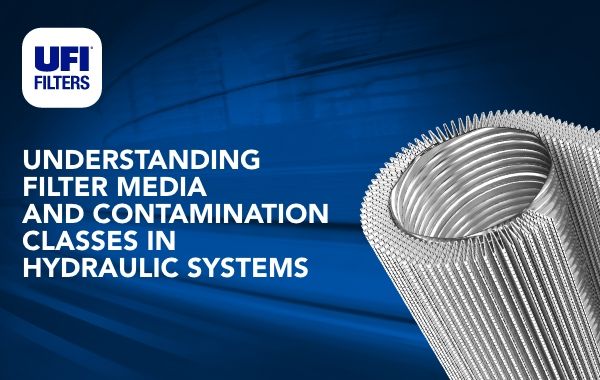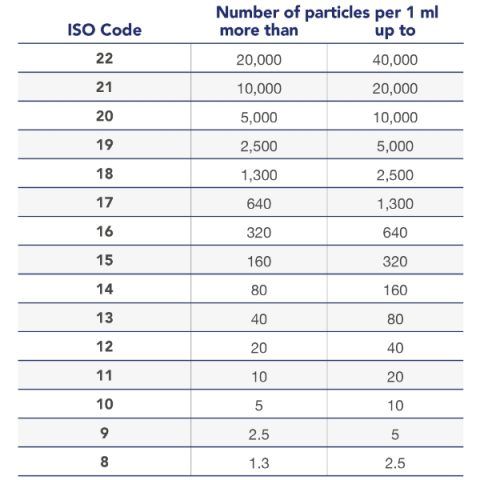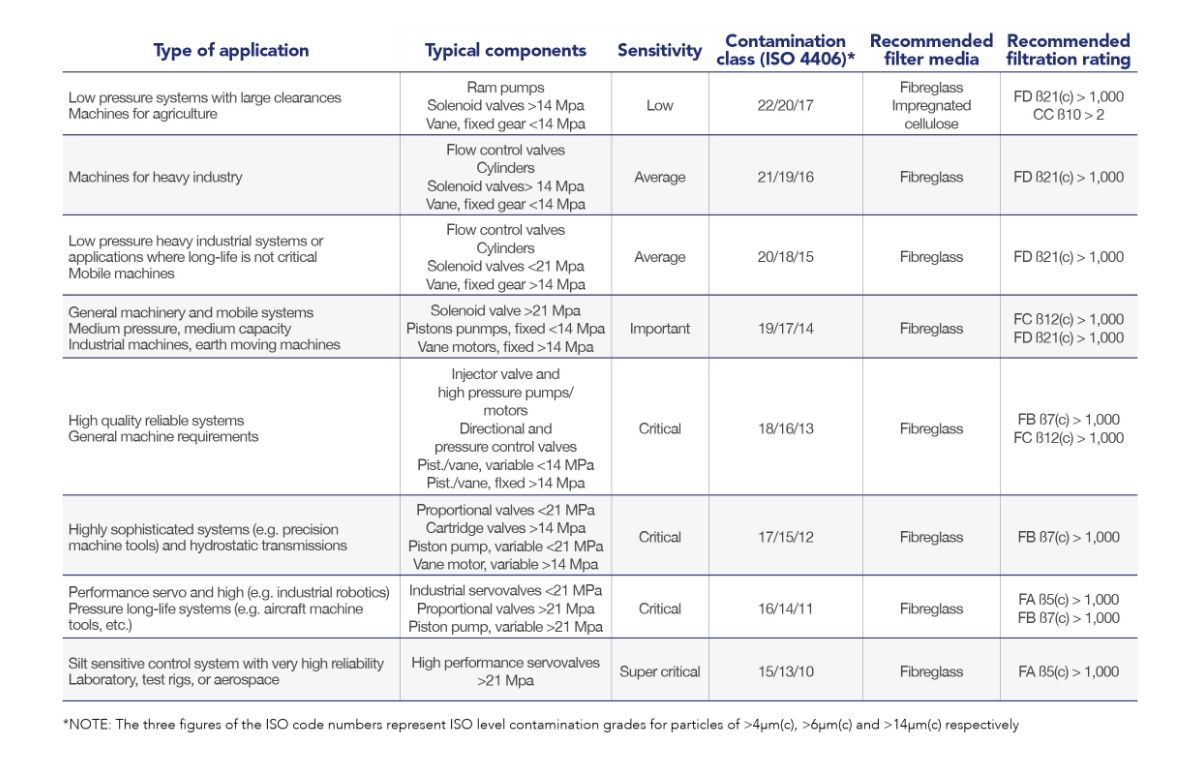
In the world of hydraulics, achieving optimum performance and component longevity is largely dependent on the level of fluid cleanliness maintained throughout the life of the system.
The presence of contaminants in the hydraulic fluid can lead to wear, reduced efficiency, noise, reduced lubrication and cooling capacity, and can ultimately result in system failure.
That’s why hydraulic filters are so important – they act as the first line of defence against contaminants.
However, choosing between different filter material options and contamination classes can be a daunting task.
This article aims to simplify this process by looking at the filter materials and contamination classes required for some of the most important hydraulic applications.
Brief summary of contamination classes

The contamination class of a hydraulic system, as explained in detail in March’s post, is usually specified using the ISO 4406 standard. This denotes the number of particles present per millilitre of fluid at different sizes (e.g., 4 µm, 6 µm, and 14 µm).
For example, a contamination class of ISO 15/13/10 means:
– 15: Up to 32,000 particles with sizes ≥4 µm per millilitre
– 13: Up to 4,000 particles with sizes ≥6 µm per millilitre
– 10: Up to 512 particles with sizes ≥14 µm per millilitre
Importance of contamination and filter media selection
Different applications have different contamination tolerance levels.
In hydraulic systems, two factors in particular determine the required level of cleanliness:
- Increased pressure: As pressure increases, the negative impact of suspended particles in the fluid becomes more significant. Imagine a particle colliding with component surfaces at high pressures: the wear and damage will be greater than at lower pressures.
- High-performance components: Components designed to deliver high performance are often fabricated via more precise and delicate machining, making them more sensitive to fluid contamination. Servo valves, for example, fall into this category.
In simpler terms:
- Higher pressure → Greater particle wear
- Higher performance components → Greater sensitivity to contamination
Each fluid power component manufacturer specifies the contamination level, in terms of a contamination class, that should be maintained for the fluid used in the system to ensure optimal performance and maximum component lifespan.
Therefore, to achieve the specified contamination level, selecting an appropriate filter media is crucial.
Using a table with recommended cleanliness code references for each application, it is possible to determine the ISO code for various critical components, such as pumps, valves, actuators, etc.
The following table lists some general fluid power applications, their suggested contamination classes, and the recommended filter material to achieve the corresponding cleanliness level:

It is important to note that selecting the correct media is only the first step in filter selection.
Other factors must also be considered during filter selection.
For instance, the higher the efficiency of the media, the lower its permeability, leading to an increase in pressure drop.
Media selection is crucial for subsequently selecting the most suitable filter for the application’s needs.
Matching needs with solutions
Maintaining the cleanliness of hydraulic fluids through proper filtration is critical for hydraulic system performance and longevity.
By selecting the appropriate filter media based on the specified contamination classes, optimal performance can be guaranteed across various applications.
UFI Filters Hydraulics offers a wide range of filter media options, each with various filtration ratings.
For detailed information and technical support, visit our website or contact our sales team.